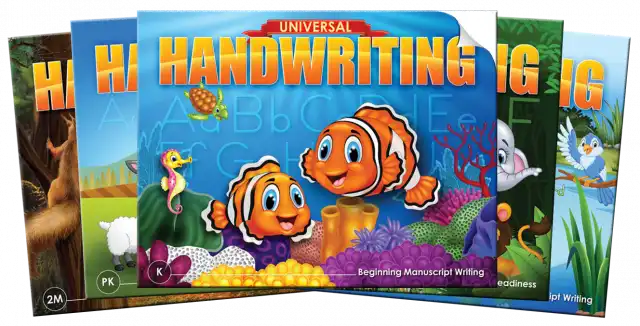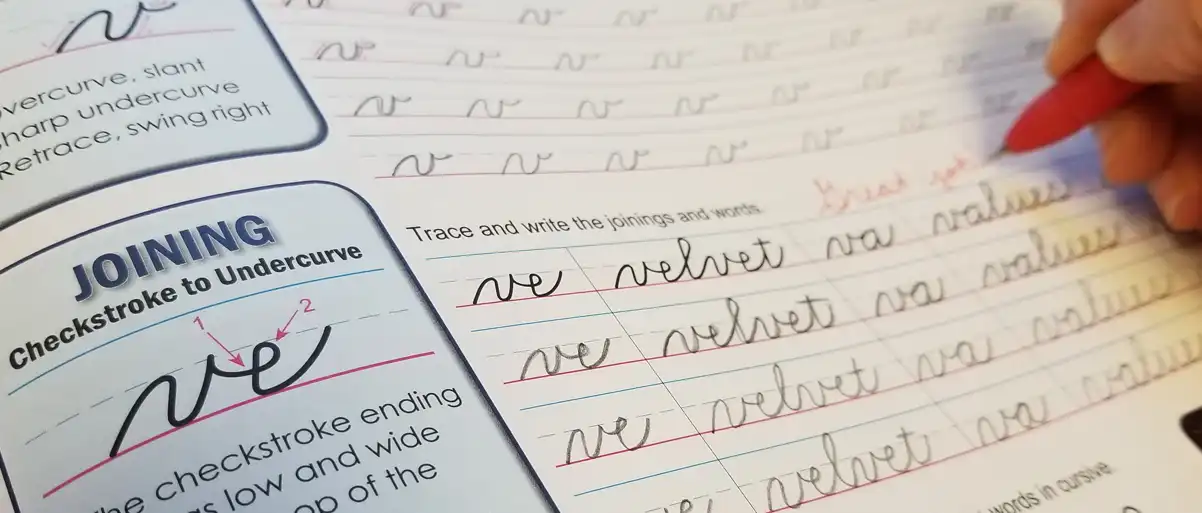
6 Ways to Make Handwriting Fun
Before many children even start school, they begin to “pretend write,” creating line after line of doodles to mimic the way they see grownups writing. Learning to write by hand is so exciting for children; it’s a sort of right of passage that they can’t wait to begin.
However, that excitement can quickly turn to frustration if students struggle with handwriting development.
Challenging students with visual, auditory, and kinesthetic activities as you teach the letters helps them to achieve initial success. To make handwriting fun, try these ideas to keep students engaged and excited.
6 Ways to Make Handwriting Fun
1. Basic Strokes Pictures

Did you know that if students can draw a stick figure, they can make any letter of the manuscript alphabet? It’s so important for students to be able to recognize and write the basic strokes in a letter before they practice it!
Handwriting instruction expert Thomas Wasylyk explains, “The basic strokes are like the DNA of letters. They’re the building blocks that are used to make all of the letters.”
To help students recognize and write the basic strokes have them make pictures out of the basic strokes. (We have a free worksheet you can use here!) They can make people, houses, animals, cars, plants, etc.
This activity can get really fun and interesting when you try it with kids learning the cursive basic strokes!
2. Rainbow Basic Strokes
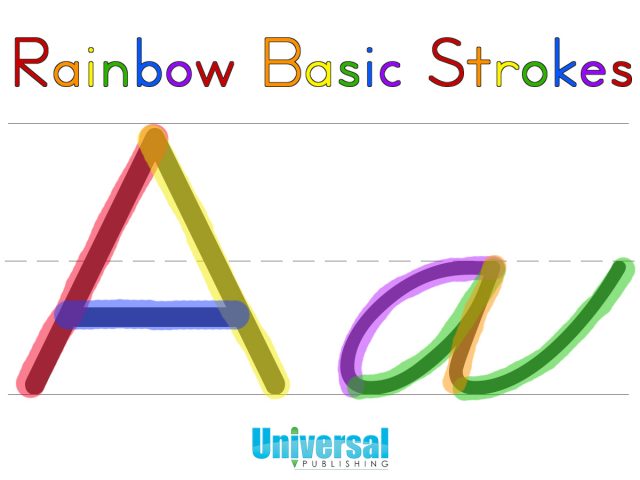
Another great activity to reinforce how basic strokes are used in letter formation is Rainbow Basic Strokes. What better way to help students “see” the basic strokes in a letter than to give them some color?!
Provide students with a light-colored model of the letter to trace over. Have the students use a different color to trace over each basic stroke in the letter they are learning. (If using a handwriting workbook with screened models, we recommend using the first one or two models for this activity, then tracing the rest normally.)
3. Use an Animated Alphabet
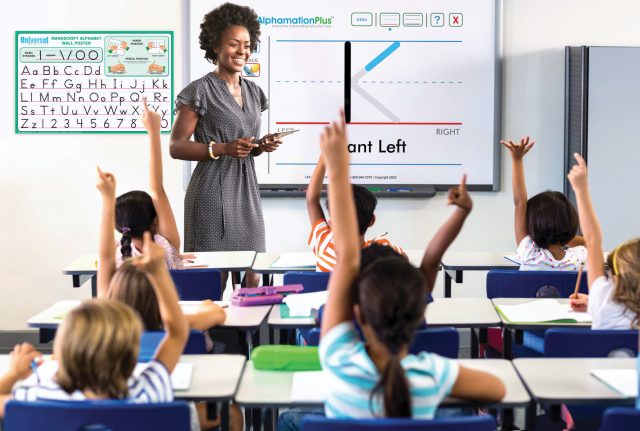
Another way to make handwriting fun is to use an animated alphabet like AlphamationPlus.
Handwriting instruction should be an interactive process, with students as involved in the lesson as the teacher. Before your students begin to practice a letter, be sure they thoroughly understand how to form the letter.
Ask them questions about where the letter begins, where it ends, how many slant strokes are used, etc. See if students can find any other letters within the letter they’re learning (for example, v in the w, l in the h, etc.).
Students love “deconstructing” each letter stroke by stroke, and doing so gives them a better understanding of how to write the letter properly.
4. Listen to the Strokes
After your students have learned to write at least a few letters, try this game to see if they can write the letter based on stroke descriptions.
Give verbal instructions on how to form the letter. For example, if you’re doing the cursive A, tell students to begin at the top line, downcurve to the bottom line, undercurve to the top line to close the oval, slant to the bottom line, and undercurve to the midline. See if they can complete the letter based solely on the stroke descriptions.
If you’re using a handwriting program, the student book letter pages and/or your teacher edition should include stroke descriptions.
5. Make Letter Pictures
Kids love to draw, and making letters into pictures can be so much fun! It also helps students take a closer look at letter structure, which reinforces handwriting skills as well as letter recognition.
To make letter pictures, give each student a blank sheet of paper and ask them to write the letter (the bigger the better!). Then ask them to make a picture out of the letter.
For example, if the lesson is on the letter Y, perhaps they can make a tree out of it. For the letter O, they can make a happy face. The possibilities are endless!
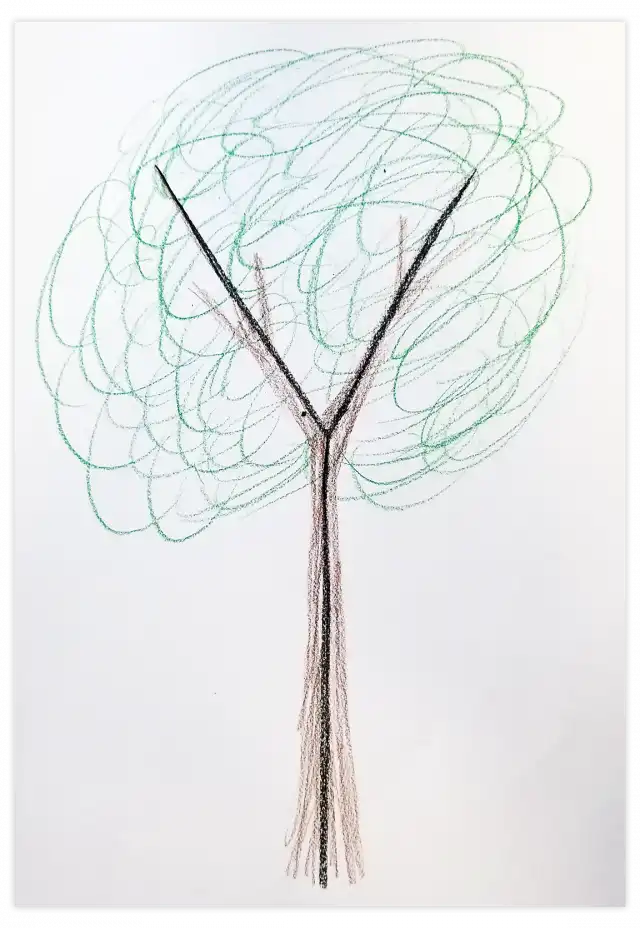
6. Use Real-Life Writing Opportunities
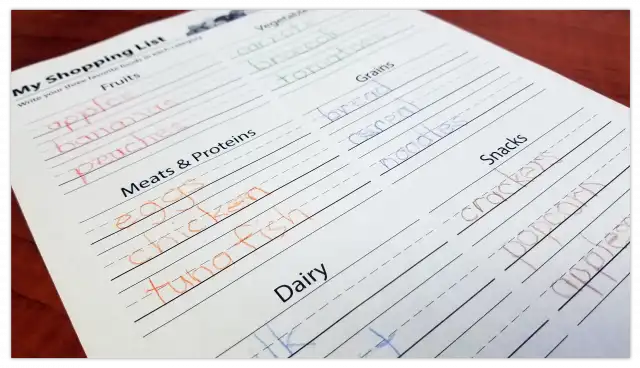
Give students real-life activities to practice their handwriting. You have the students complete these activities at the end of a handwriting lesson or assign them as “handwriting homework.” Some ideas include:
- Writing a letter or postcard to a distant relative.
- Writing a to-do list or grocery list.
- Filling out a form or application.
Help make handwriting fun for your students by incorporating these simple activities into your lessons! Let us know in the comments which ones you really like (and feel free to share some new ideas with us, too)!

